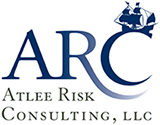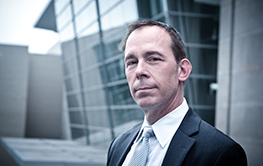
A Better Way to React to an Accident
posted in High Reliability Organizing by Charlie Madison
On Thursday, October 24, 2013, an accident occurred on a ride called the Vortex at the NC State Fair, injuring several people who remain hospitalized. Today a worker at the fair is in custody, charged with crimes because he disabled a safety switch. We all probably feel relieved and confident that the cause has been found, the wrong doer will be punished and we are all safer as a result. But in all actuality nothing of the sort has occurred and is not likely to. By reacting to this event with outdated ideas of how and why accidents occur, particularly by criminalizing the actions of an individual who was on the scene at the time of the accident, we have in all probability made it impossible ever to know what really happened or, more important, to make that ride and others at the NC State Fair safer in the years to come. How could this be?
The answer lies within two industries where safety and quality are so critical that the smallest mistake can result in catastrophe, military and civilian nuclear operations and commercial aviation. These industries, and the New View of Human Performance and High Reliability Organizing that have developed out of their research and experience, have shown that after an accident, we have a choice: We can blame and punish or we can learn and improve; we cannot do both. Although this sounds like heresy, the realization and implementation of these disciplines has led to nothing less than a revolution in safety and quality performance in these industries.
We are human, and it is part of our nature to act on the impulse that bad things happen because bad people did bad things. But in the mid 1980s, the commercial aviation industry put that impulse aside and stopped blaming airline crashes on pilot error. The industry saw an immediate and dramatic improvement in safety and quality performance in the years that followed. It is now arguably the most highly reliable industry in the world. After all, despite millions of travelers and thousands of take offs and landings, the industry saw no fatal accidents during the four years prior to this spring’s tragic accident in San Francisco. That had never happened in history, and it is a direct result of applying the lessons they have learned about human error, accidents and why they occur.
The reason they put blame aside is they realized that accidents are never caused by human error. Human error is so constant and so much a feature of our work that it is never the cause of an accident, it is merely the symptom of a problem deeper inside the organization system and serves not as the end of the investigation but as its beginning.
So let’s look at the Vortex accident. Here’s what we know:
– Riders were getting on the ride, safety bars were not yet engaged, the ride started up, and several riders and a worker were injured.
– A safety switch was likely disabled.
– When the ride arrived at the fair grounds the safety switch was not functioning.
– The non-functioning switch was found by state inspectors and was replaced.
– The ride owner had bought the ride in Belgium and had operated it thousands of times in the following months without incident.
Here’s what we don’t know and questions that need to be answered:
– Before the Vortex arrived in Raleigh had the safety switch ever been operable while it was owned by this company?
– How did the ride start up again before all the safety bars were secure?
– How was the safety switch disabled?
– What instructions was the employee given about the switch by his employer? By fair officials? By state inspectors?
– What were the employee’s motivations for disabling the switch? What pressures and incentives were guiding his behavior?
– Was something different about this year’s state inspections? Were they less thorough because of budget cuts or personnel shortages caused by changes wrought by the NC Legislature?
– Did the safety switch even matter? Did the sudden appearance of this new device in Raleigh introduce new features that interfered with existing safety procedures, thus making things less safe?
– If the switch had not been working before, how could the ride have operated thousands of times without a mishap?
– How was this man a valued and respected employee on Wednesday and a criminal on Thursday?
These questions are all just the tip of a very large iceberg of investigatory questions that ought to be asked. Many of them will, but some of them may not. The goal should be to find out exactly what happened and how it happened and to examine how the system led to the result. My experience in investigating dozens of industrial accidents, is that an equipment failure almost always is accompanied by the overriding of a safety switch by a worker. The existence of that circumstance is almost not even interesting; the other questions about the system hold the key to learning and improving.
The fact is, with criminal charges pending, the only thing we can be certain of is that the real answers to how this accident happened and how to prevent it from happening again will never be found. The industries that practice the New View have found that blame, especially blame as severe as criminal prosecution, makes the investigatory atmosphere so toxic that virtually everyone involved has great incentive to withhold or shade information so that all blame is placed solely on the one man who is being prosecuted. The whole truth never comes out, and hence the chance for real learning and improvement is completely lost.
The crux of the problem is found with the answer to this question: Is it probable that any other worker at the fair, faced with the same situation, would have acted in the same way as the worker who has been charged with the crime? If the answer is yes, which is highly probable or even likely, then a criminal prosecution of this one man will render nothing but punishment, and we will be no safer. In fact, we will in all likelihood be less safe. For we will go forward with complacency, believing that by punishing a bad apple we have solved our problem, when the system is still in place unchanged, awaiting another worker to trigger a similar accident.
There is a better way to react to accidents and to make things more safe. The New View of Human Performance and High Reliability Organizing is the way forward, and these disciplines are being learned and implemented by companies and organizations that care about safety and quality. After all, when it comes to an accident, if one person is called to atone for the sins of the many, it is not only manifestly unfair, it is downright dangerous.

 Charlie Madison, Founder
Charlie Madison, Founder